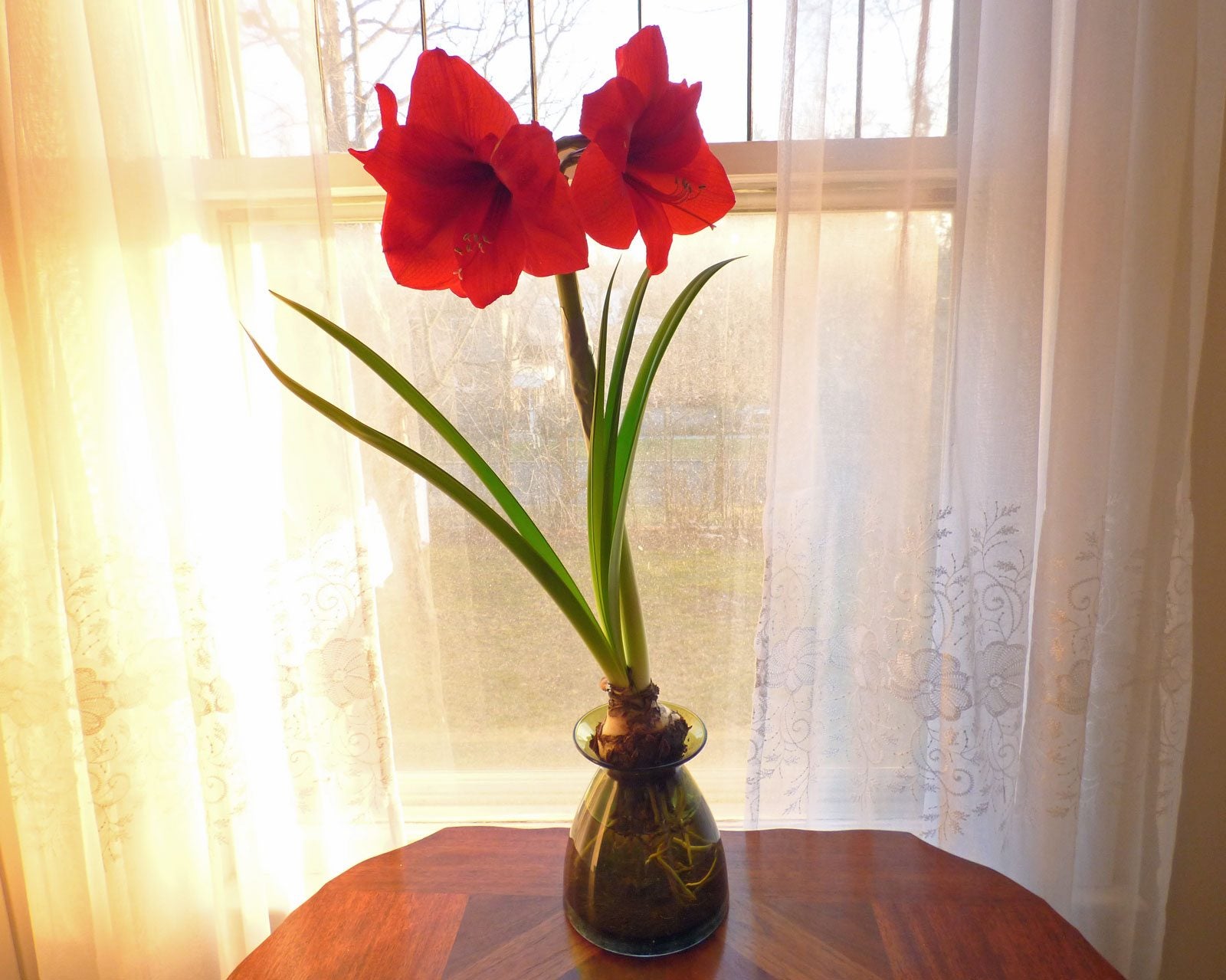Caring For Amaryllis Grown In Water: Learn About Growing Amaryllis In Water


Did you know that amaryllis will grow happily in water? It’s true, and with suitable care of amaryllis in water, the plant will even bloom abundantly. Of course, the bulbs cannot remain in this environment long term, but it’s a great way to enjoy the showy flowers over winter when all else looks dreary. Want to learn more about amaryllis care for bulbs grown in water? Read on.
Amaryllis Bulbs and Water
Although most amaryllis bulbs are forced indoors using soil, they can also be easily rooted and grown in water too. The main thing to keep in mind when growing amaryllis in water is not to let the bulb itself come in contact with the water, as this will promote rot. So how then is it done, you ask. With the use of a jar specifically designed for forcing bulbs in water, you’ll be amazed at just how easy it is to force an amaryllis in water. While there are specialized kits available that make this endeavor easier, it’s not necessary. All you need is an amaryllis bulb, a vase or jar slightly larger than the bulb, some gravel or pebbles, and water. In some instances, the gravel stones aren’t even needed, but I feel it looks more attractive.
Growing Amaryllis in Water
Once you have everything you need, it’s time to place your bulb in the vase. Begin by adding the gravel, pebbles, or decorative stones. Depending on the type of jar used, this may be about 4 inches (10 cm.) deep or 2/3 - 3/4 of the way full. Some people also like to add aquarium charcoal to the gravel, which helps to prevent odors. Prepare your bulb by trimming off any dry, brown roots. You want the roots of amaryllis bulbs in water to be fleshy and white. Now place the bulb root side down on the gravel medium, pushing it slightly into them but leaving the top third of the bulb exposed. Add water to about an inch (2.5 cm.) below the base of the bulb. This is important. The base of the bulb and roots should be the only parts touching the water; otherwise, rotting of the bulb will occur.
Amaryllis in Water Care
The care of amaryllis in water begins after planting.
- Place your jar in a sunny windowsill.
- Maintain temps of at least 60 to 75 degrees F. (15-23 C.), as the bulb depends on the warmth to help with sprouting.
- Keep an eye on the water level, check daily, and add as needed – changing the water once a week is preferable.
Within a few weeks to a month or so, you should begin noticing a small shoot emerging from the top of your amaryllis bulb. You should also see more root growth within the gravels. Rotate the vase as you would for any houseplant to promote even growth. If all goes well and it receives plenty of light, your amaryllis plant should eventually bloom. Once the flowers fade, however, you’ll need to either transplant the amaryllis to soil for continual growth or you have the option of tossing it out. Amaryllis grown in water doesn’t always perform as well as those grown in soil, but it’s still a worthwhile project. That being said, if you do decide to continue growing your amaryllis plant, it may take a couple of years before it reblooms.
Sign up for the Gardening Know How newsletter today and receive a free copy of our e-book "How to Grow Delicious Tomatoes".

Nikki Tilley has been gardening for nearly three decades. The former Senior Editor and Archivist of Gardening Know How, Nikki has also authored six gardening books.